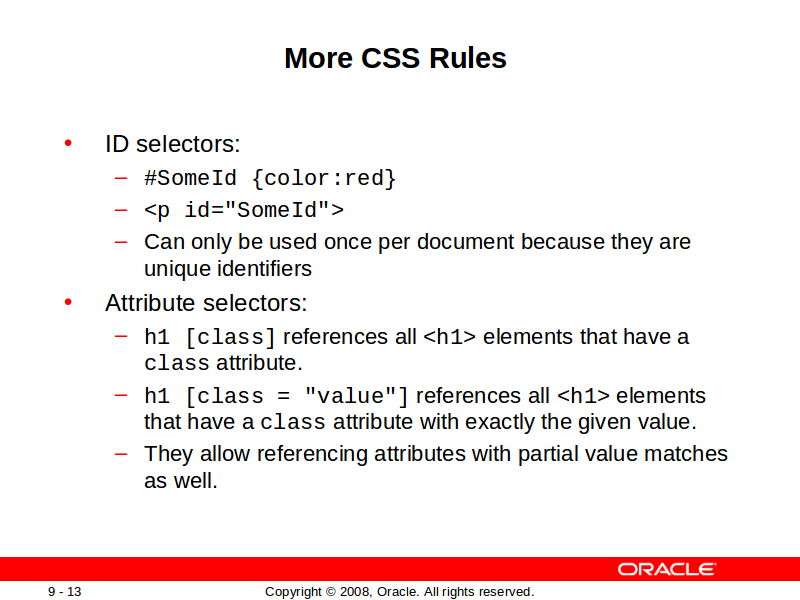

More CSS Rules
In addition to these, a set of pseudo-classes can be used to define further behavior. The best-known of these is :hover, which applies a style only when the user “points to” the visible element, usually by placing the cursor over it. It is appended to a selector as in a:hover or #elementid:hover. Other pseudo-classes and pseudo-elements are, for example, :firstline, :visited, or :before. A special pseudo-class is :lang(c), "c."
A pseudo-class selects entire elements, such as :link or :visited, whereas a pseudo-element makes a selection that may consist of partial elements, such as :first-line or :first-letter.
CSS information can be provided by various sources. CSS style information can be either attached as a separate document or embedded in the HTML document. Multiple style sheets can be imported and alternative style sheets can be specified so that the user can choose between them. For example:
h1 { color: white; background: orange !important; }
h2 { color: white; background: green !important; }
A file with this code is stored locally and is applicable if it has been specified in the browser options. "!important” means that it prevails over the author specifications.